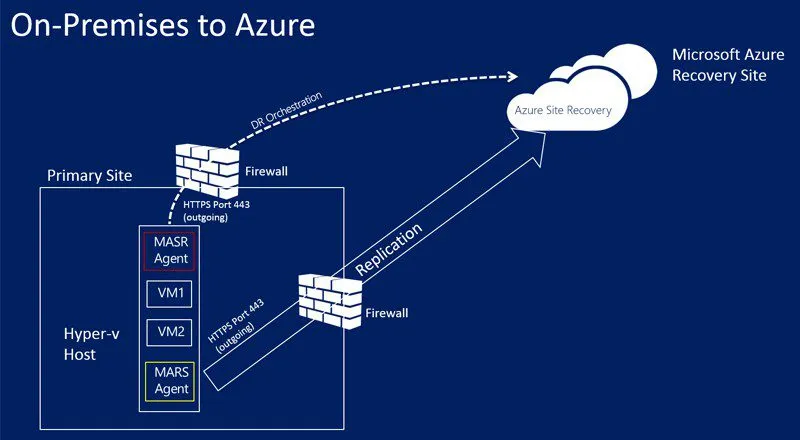Azure Site Recovery – When Disaster Begins at Home
It may be because the phrase Disaster Recovery begins with the word disaster that it evokes such a painful feeling But those whove been around d...

It may be because the phrase “Disaster Recovery” begins with the word “disaster” that it evokes such a painful feeling. But those who’ve been around datacenters since long before the cloud existed remember the real source of this uneasiness:
- The pain of building an entire second data center to provide complete redundancy.
- The pain of coming to understand the implications of latency to a disaster recovery plan.
- The pain of learning the difficult answer to the question, “Sure it will backup, but will it restore?” at the worst possible time.
- The continued pain of perpetually rotating backup media.
Azure arrives
It should come as no surprise that those experienced professionals greeted Microsoft Azure with open arms.
Now the datacenter comes with its own geo-redundant backup. Whatever you put into virtual machines on Azure is automatically and constantly backed up to one of Microsoft’s worldwide network of datacenters. There’s never a question of whether the backed-up workloads will all restore when necessary.
Add the fact that you no longer need to maintain the hardware and software required to operate a datacenter — and it’s truly an IT dream come true.
The big “however”
There are still some workloads, applications and data that corporations insist remain on-premises. Even if you’ve moved many workloads to the cloud, you may still have mission-critical systems that operate in your own datacenter. They may be a blend of physical servers, virtual servers, Hyper-V here, VMware there and some Linux servers among the Windows Servers. It sure would be great if you didn’t have to build a redundant backup strategy to provide disaster recovery for those and could simply send them to Azure.
Well, you can!
Azure Site Recovery
According to the Microsoft Azure Website, “Site Recovery is an Azure service that contributes to your business continuity and disaster recovery (BCDR) strategy by orchestrating replication of your on-premises servers and virtual machines to a secondary on-premises datacenter, or to Azure. Site Recovery handles the replication, and you can kick off failover and recovery with a simple click.”
Bet you didn’t see THESE coming
There are many features you may not expect from Azure Site Recovery, such as:
- Yes, it can back up VMware virtual machines as well as Hyper-V.
- Yes, it can back up your on-premises servers to another datacenter.
- Yes, it can back up your on-premises servers, physical and virtual to Azure.
- Yes, it can back up Linux servers.
- Yes, you can configure specialized failover processes in PowerShell.
- Yes, you can design very complex orchestrations for restoring after a disaster.
- Yes, restoration can be simple.
- Yes, there is non-disruptive restoration testing available.
There’s even an excellent “No!”
No, there is no running IaaS component, so you pay for Azure resources only when there’s a failover or migration to Azure initiated and virtual machines get provisioned. Application data is replicated to your Azure Storage for isolation.
There’s a great deal more to Azure Site Recovery
Azure Site Recovery removes the pain of manually backing up data and provides confidence when setting out to restore important information. But there are so many more values baked into Azure Site Recovery. To learn how Azure Site Recovery can ease your IT pains, connect with an experienced Agile IT representative today!





